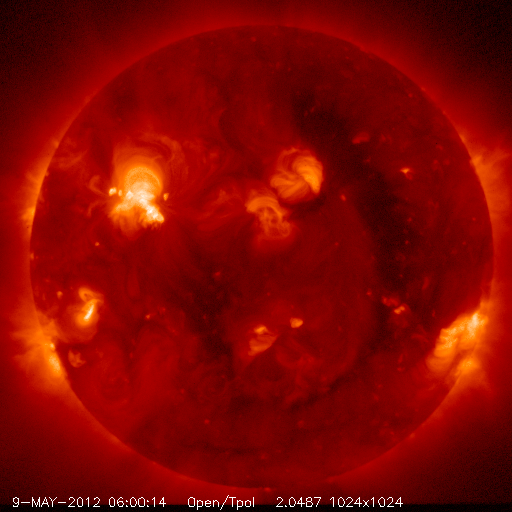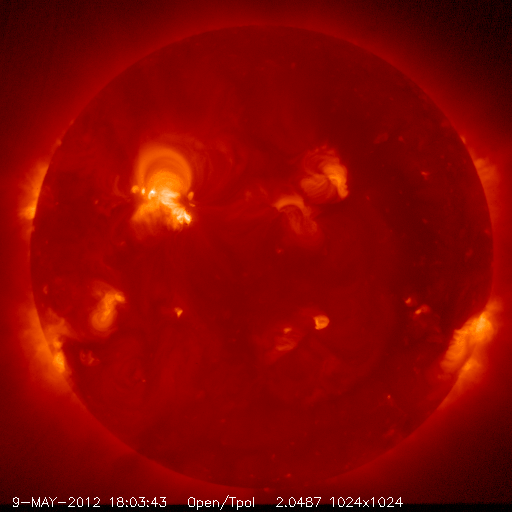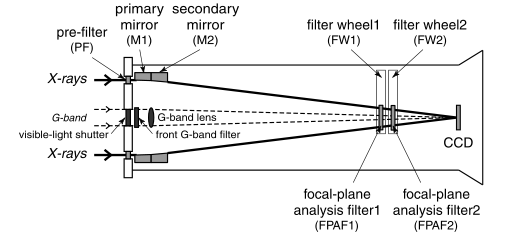XRT Stray Light Study -- Measurement and Correction.
(24 May, 2014 by Aki Takeda)
Link to
HINODE (JAXA) and
XRT hopmepages.
1. Stray light contamination on XRT X-ray images.
- ?-May-2012 : Increase of G-band image noticed.
- 9-May-2012 : Ti-poly image blurring noticed (between 6UT and 18UT synoptics).
-
XRT optical elements and entrance fileter
(from Narukage, et al., 2011, Sol.Phys. 269, p.169).
2. Stray light correction project.
2.1 Case of Yohkoh/SXT.
Since its failure of entrance fileter in November 1992, Yohkoh/SXT suffered
significant amount of stray visible light contaminated on X-ray images.
They corrected the images using the calibration image called 'terminator'.
It is a visible stray light patern through the X-ray analysis filter
taken during the day to night transition of the satellite, when the
X-ray signal from the Sun is completely absorbed with the thick atomoshere
of the earth, but the visible light is still penetrating, c.f.,
Sunset light curves in X-ray and visible stray light.
| Level_0 (raw) data | SFC (stray light) image |
Level_3 (corrected composite) img |
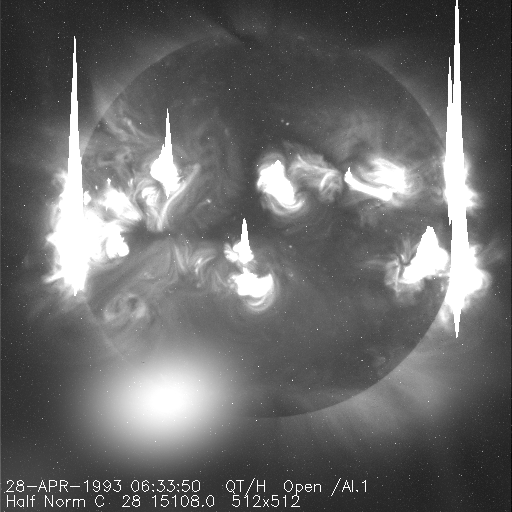 |
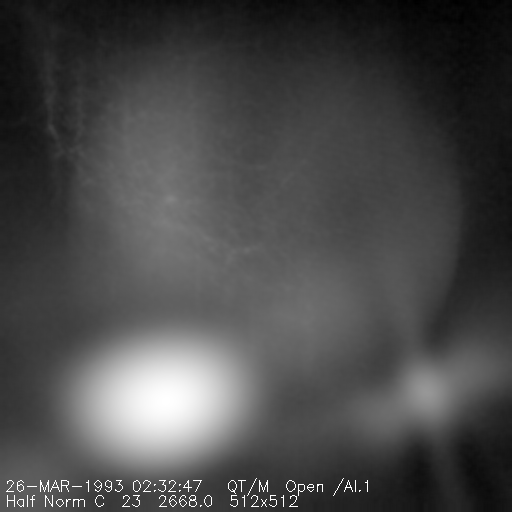 |
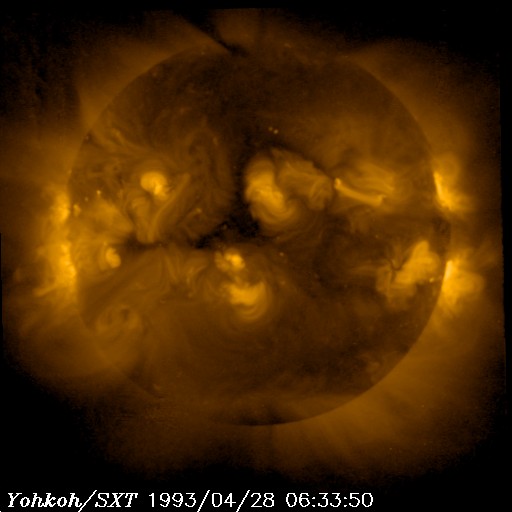 |
2.2 Planning the test observation with XRT.
The first test data was taken on 6-May-2014, 17:46 -- 18:06UT.
- 17:30:00 -- s/c pointing to disk center (0,0)
- 17:33:00 -- usual synoptic program.
- 17:46:30 -- test sequence started (until ~18:03).
- -----------------------------------------------------------------------------------------------------------------------------------------------
- 250x250 pix, 1" resol., every 10 sec on AR12056, Ti-poly + G-band(VLS close).
- 1024x1024 pix, 2" resol., every 60 sec, Full-Sun, dark + Ti-poly + G-band(VLS close).
- detailed parameters of the sequence (XOB#1A1A).
- -----------------------------------------------------------------------------------------------------------------------------------------------
- 17:47:00 ------ XRT entering twilight zone.
- 17:57:00 ------ XRT s/c night entry.
- 18:02:00 ------ XRT s/c night exit.
- 18:06:30 ------ XRT SAA entry.
- 18:12:00 ------ XRT exiting from twilight.
- 18:30:00 -- re-pointing to the next target
- 18:30:00 ------ XRT SAA exit.
3. Result of the test observation.
3.1 Solar condition
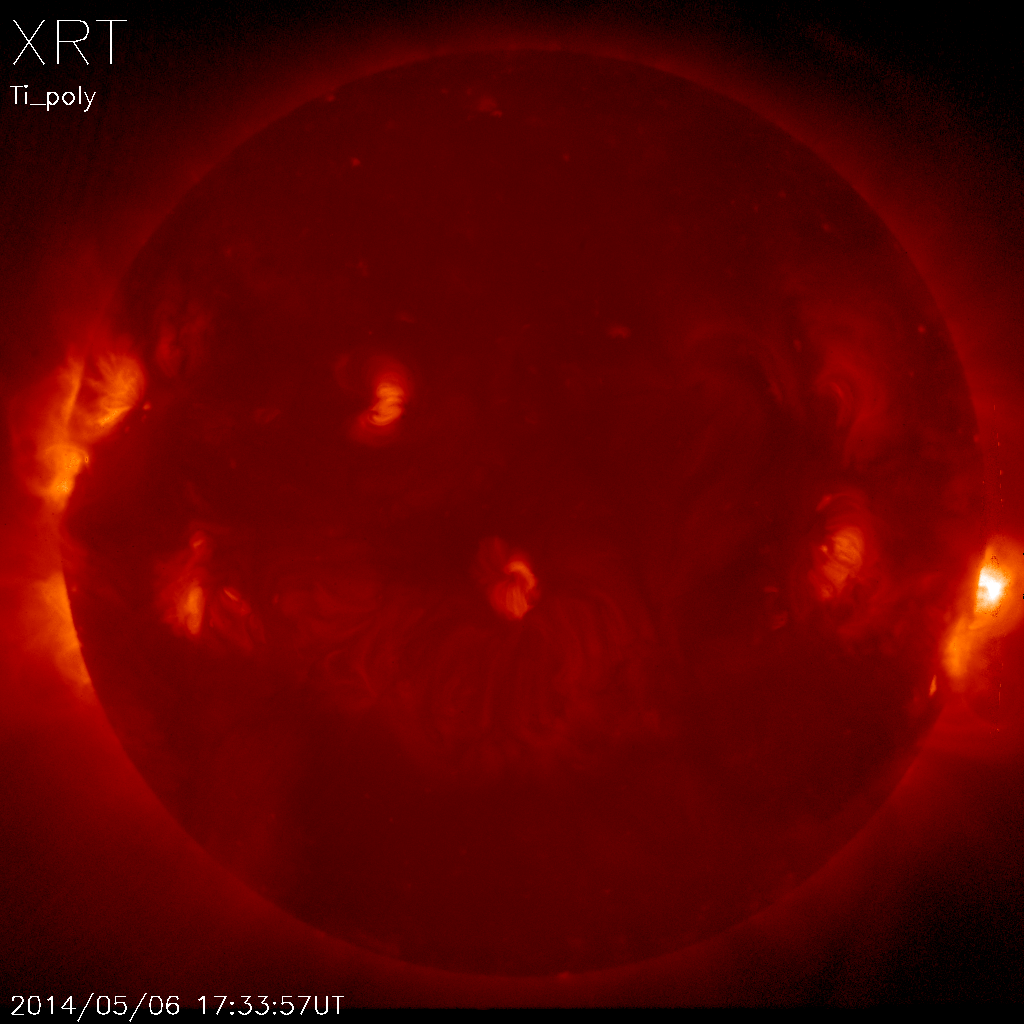
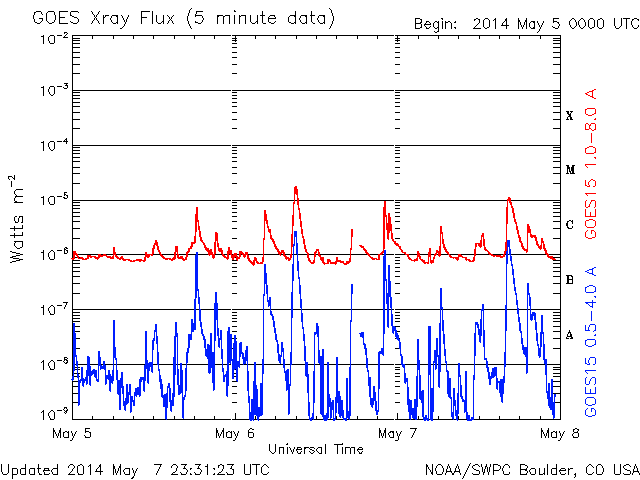
3.2 Sunset light curves
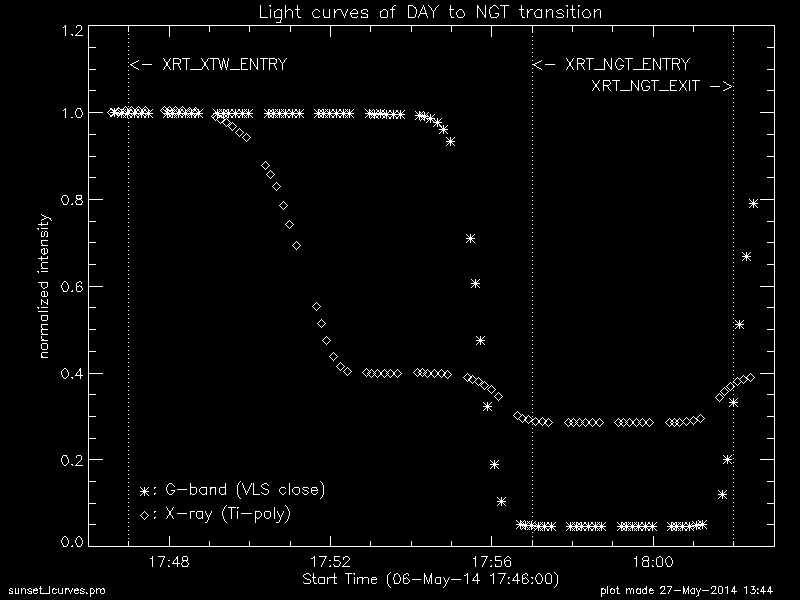
3.2 Stray light images
According to the light curves, the Ti-poly images taken between 17:52 and
17:56 are likely to show intensities only from the visible light
(i.e., candidates of the stray light images).
Stray light images obtained.
However, the above movie shows that, in the image taken at 17:52:40,
we still see bright X-ray structure (AR on the West limb).
On the other hand, in the image at 17:55:10, the solar disk
(bright disk) started to distort due to visible-light sunset.
Therefore, the image at 17:53:55 can only be used for stray light correction.
The stray light patern appears to consist of the following 3 components:
- A round plateau formed by the solar disk image.
- Variable fringe-like stripes. Similar stripes are seen in the
dark images,
but the patern changes fast in time: Even two images taken 6 seconds apart
have different stripe patern, so cannot be removed by subtraction.
I did not use these dark images, instead let XRT_PREP do its default work,
i.e., a model dark was subtracted.
- Stable stripes mainly appear in the left side of an image.
The same patern appears in the G-band image, but black/white inverted.
The intensity range of the obtained stray light image (500 msec exposure)
is 0 to 20 DN above the dark level, while the quiet corona before
attenuation has the same order of range under the same exposure time.
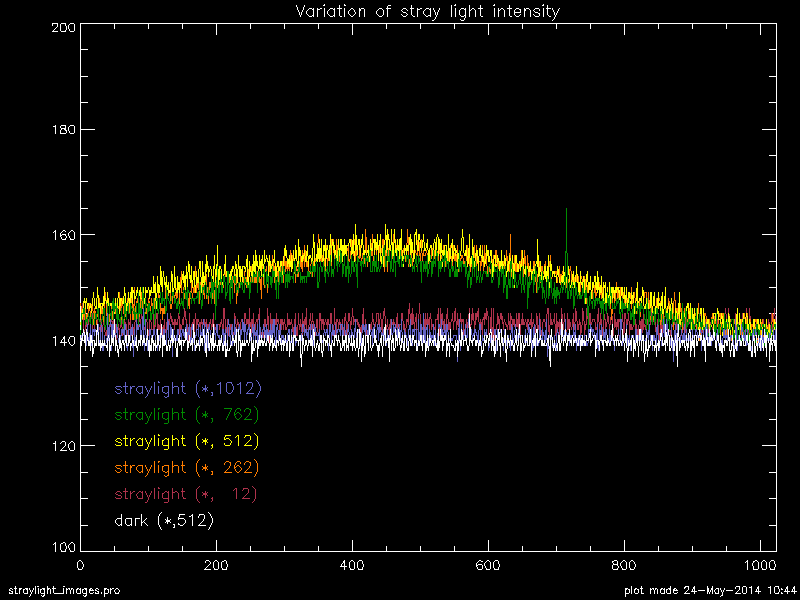
3.3 Image correction.
The stray light image obtained from this experiment turns out to be useful
to correct the visible-light contaminated coronal images with the same
exposure time (and also same filter, same pointing). However, applying this
to longer exposure images results in less satisfactory due to enhanced
noise (need more S/N!). In order to correct synoptic images, it is
preferable to take the stray light images with the same exposure time as
that of the longest of the composite triplets.
The below is an example of successful correction.
I simply subract the 17:53:55 image (stray-light image) from the 17:47:40
image (coronal image before attenuation). XRT_PREP not applied. I tried to
correct the synoptic image (taken at 17:33:57, 1.44 sec exposure), but the
resulting image
was a little rough or noisy where the intenisity is low.
| before correction |
after correction |
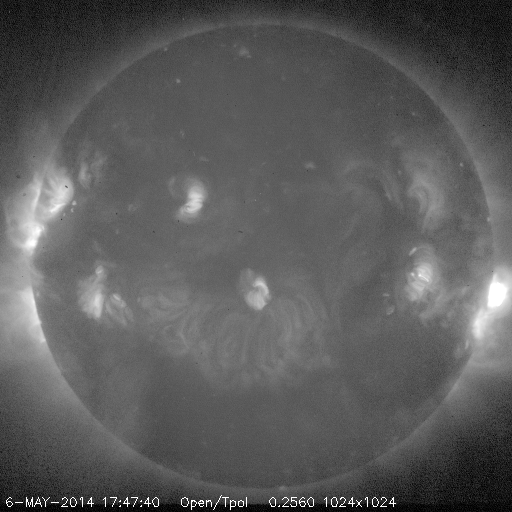 |
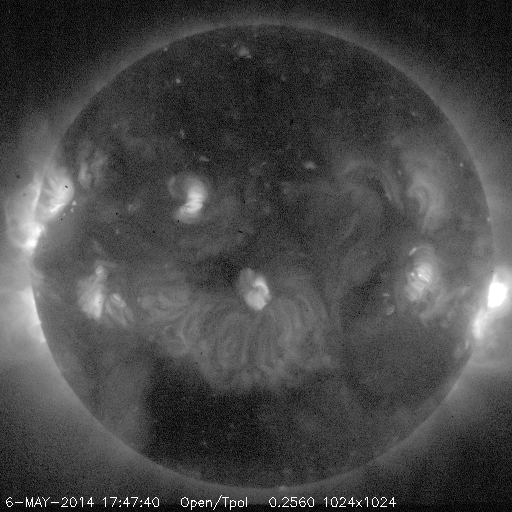 |
